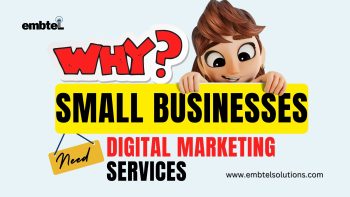How to Convert More Web Traffic, Making your website’s product page customer-focused will supercharge your conversion rates.
Business owners spend a small fortune on channeling their leads to the page where the magic happens, only to drop the ball where it matters most.
I’ve seen this time and again – sites that do an incredible job with generating and nurturing leads so often fail at turning an interested visitor into a customer.
In this article, we’re going to take a look at five ways you can convert more web traffic into revenue by optimizing your product page.
1. Address Your Customers’ Concerns- Convert More Web Traffic
Despite being super interested in your product, many visitors may be hesitant to pull the trigger because, well, they don’t know you.
If you’re frequently selling to first-time customers, it’s vital that you address the things they consider obvious risks. Are you actually going to deliver the product they’re buying? Can they get in touch with you easily after the sale? Are they signing up for a service with a bunch of hidden costs that will surprise them later? What if they don’t like your product?
The product page is the right place to address these worries.
For a great example of how to address these worries, take a look at what Bay Alarm Medical did on their pricing page:
image source: bayalarmmedical.com
- Social proof connects to a trusted third party. A 4.7-star rating carries a lot of weight when it stands next to the Google logo.
- The site clearly shows that there are two ways to interact directly with the company’s support team: via a toll-free telephone number and a live chat window on the page itself.
- Each subscription plan has the words “No Hidden Fees” clearly displayed beneath the price.
- The lengthy 30-day trial means that customers won’t tie themselves into a never ending subscription to a service they hate.
What makes this approach doubly important for a company like Bay Alarm Medical is the fact that they’re usually selling to a very risk-averse demographic.
It’s important that you fully understand your target audience to grasp their possible worries about doing business with you. Once you do, make sure your product page addresses these issues very clearly.
2. Make Social Proof Part of Your Product Page’s Content
Just to be clear, I’m not suggesting that you simply show customer reviews, star ratings, or testimonials on your product page.
I’m going further than that. I’m making a case for your customer reviews being as important a section of content on your product page as any other.
Customers often leave comments that do more than provide social proof. Their reviews are often very educational and give deeper insight into the product, how they used it, and the way it benefitted their lives.
This is social proof doubling as objective, credible product descriptions! Why would you not want this as visible as possible?
Herbal Dynamics Beauty offers a fantastic example of how to do this correctly on their product rose water product page. They dedicate a giant section of below-the-fold real estate to detailed reviews. Visitors to the site either reach this content section organically by scrolling or by clicking on the star-rating element placed directly below the product name/page header.
image source: herbaldynamicsbeauty.com
The reviews are detailed and extremely credible. We can clearly see customers’ real names, locations, and the date of their purchase. The reviews even have a short heading in bold, providing a quick summary of the customer’s views. It certainly helps that the visitor doesn’t have to read through everything.
On top of all this, the company even has a representative comment on each and every review, showing the visitor how seriously Herbal Dynamics takes customer interaction.
3. Get Creative With the Product Gallery- Convert More Web Traffic
We’re all aware of the basic best practices when it comes to showcasing your product visually.
- Use high-resolution images.
- Show a gallery of at least four images.
- Showcase the product from as many angles as possible.
- Show the product in use.
- Use an animated gif or video whenever possible.
But what about using your product gallery to communicate with your site’s visitors? Is there a way to use the gallery to visually highlight aspects of your product that you want to draw attention to?
Absolutely! You just have to get a little creative with it.
Take a ook at what Elemental Labs did with their flagship electrolyte product.
The first image you see in the gallery is exactly what you’d expect: the item as you’d see it when it’s been unpacked. But notice how smartly the graphic designer positions the drinks sachets. The text on each of the packets is perfectly visible, loudly proclaiming its primary ingredients.
image source: drinklmnt.com
The next image is straight-up nutritional facts. But they’re displayed in a very attractive, eye-catching layout. The same color scheme is used as the rest of the page so that the information doesn’t feel out of place.
The following gallery pic is a knockout. We see an open sachet, with the contents spilling out, next to the box that it ships in. Both of these items, again, clearly display the drink’s ingredients along with some other unique selling points.
The rest of the gallery follows the same formula: high-quality shots of the product in various stages of use along with beautifully designed graphics proclaiming its benefits and selling points.
4. Showcase All Your Payment Methods
VISA, MasterCard, PayPal, Google Pay, Skrill… there’s no shortage of transaction facilitators out there. And it’s very likely that your visitors prefer one of these for a very specific reason.
If you’ve gone through the effort of making as many of these payment options available to your customers, why not make a big deal out of it?
The main reason for showcasing these payment methods is to ensure that your visitors can actually become customers. If you want to maximize your conversion rates, you’ll want to ensure your visitors know that you’ve got their needs covered.
A secondary reason for shining a big, bright spotlight on all your payment methods is because it’s a great way to “buy” trust and credibility for your brand.
Most potential customers take payment security very seriously. In fact, according to research conducted by The Baymard Institute, 17% of all abandoned carts come as a result of a lack of trust.
Findings in an ecommerce survey conducted by YouGov showed that 40% of online shoppers feel more confident about supplying their payment information to a site that offers multiple payment methods.
This makes good sense.
Online payment services like the ones I mentioned earlier won’t partner with a website that isn’t technically robust and secure. And shoppers instinctively know this.
Understandably, people like seeing globally recognizable logos on a site that they’re about to trust with their credit card information.
Aromatherapy retailer, Pilgrim, shows us how this is done on their product pages, smartly placing no fewer than seven payment service logos right beneath the main call to action.
Inconvenience and fear are two giant obstacles between your site and an improved conversion rate. And partnering with multiple payment channels is a smart way of removing both.
5. Embrace Video- Convert More Web Traffic
No matter what product you’re selling, your visitors want to see it in action. And that’s where explainer videos come into the picture. They’re becoming incredibly popular conversion tools, with more and more online businesses investing in them every year.
Why is that? Well, it’s hard to argue with these stats:
- Websites with explainer videos convert at an average of 4.8%, while sites without them come in at 2.9%.
- A staggering 64% of surveyed businesses say that implementing explainer videos increased their sales figures.
- 90% of online shoppers surveyed by Idea Machine found video helpful in making their shopping decisions.
- Leads are 85% more likely to purchase a product after watching a video about it.
Explainer videos make shopping easier. They make absorbing information about your product more convenient. And they have a very real impact on conversion rates.
Don’t be left in the dust by competitors who are already investing in product videos.
Sure, they may be more costly to produce than written and visual content. But more than half of digital marketers surveyed by HubSpot say that video has a better ROI than any other content type.
Clearly, populating your site’s product pages with an explainer video is a surefire way to boost those conversion figures.
Some Final Thoughts
Generating leads takes a lot of work. And nurturing them can take even more time, money, and effort.
Building an effective marketing funnel is an enormous amount of work. It can take months, if not years, of analyzing and tweaking to get right. By comparison, optimizing your product pages is an absolute cinch. It can easily result in immediate improvements in your conversion rates. And that makes this tactic the ultimate CRO “hack.”
So, bear in mind: no matter how perfect your funnels are, if you don’t compel your visitors to click on that “buy now” button, you’re throwing money away.





